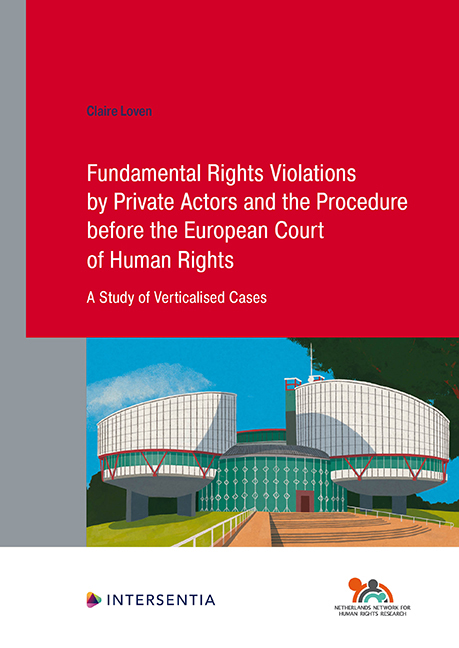 Fundamental Rights Violations by Private Actors and the Procedure before the European Court of Human Rights
Fundamental Rights Violations by Private Actors and the Procedure before the European Court of Human Rights Published online by Cambridge University Press: 29 February 2024
INTRODUCTION
This chapter introduces the Convention system by first providing a short analysis of its history. The aim of this analysis is to give further insight as to why the Convention requires complaints about interferences with Convention rights to be directed against one of the Convention States. This chapter also serves as a basis for understanding the nature and characteristics of the Convention system as described in more detail in the subsequent chapters. To this end, the intentions behind the Convention system (Section 2) are discussed first, followed by the legal obligations imposed by the Convention (Section 3), and the creation and evolution of the Convention's enforcement mechanisms (Section 4). This discussion shows how the Convention system evolved from primarily offering an inter-State safeguard of democracy to protecting individuals against a wide range of interferences with Convention rights by the State.
INTENTIONS BEHIND THE CONVENTION SYSTEM
The Convention was drafted in the years after the Second World War, which had provided horrific examples of how States can misuse their sovereign power and deeply violate individuals’ dignity, autonomy and freedom. Or, as Tomuschat put it, ‘[i]t had been learned during the horrendous years from 1933 to 1945 that a state apparatus can turn into a killing machine, disregarding its basic function to uphold and defend the human dignity of every member of the community under its power’. As the Second World War had exposed the consequences of allowing States to hide behind the shield of national sovereignty, it became accepted that the protection of human rights could not be leftto the domain of the States. In other words, international and regional systems were needed to protect citizens from State interference with their fundamental rights. This was contrary to the general stance, which had been dominant for centuries, that international law governed only relations between States and did not deal with matters within States’ domestic jurisdiction. This idea of State sovereignty relied on the notion that States were fully at liberty to make their own decisions and set their own rules, and thus potentially free to commit ‘wicked barbarism’ against their own people.
The first achievements of the internationalisation of human rights were the Charter of the United Nations (UN) in 1945 and the Universal Declaration of Human Rights (UDHR) in 1948. The UN Charter names ‘… promoting and encouraging respect for human rights and fundamental freedom for all without distinction as to race, sex, language or religion’ as one of the objectives of the UN.
To save this book to your Kindle, first ensure [email protected] is added to your Approved Personal Document E-mail List under your Personal Document Settings on the Manage Your Content and Devices page of your Amazon account. Then enter the ‘name’ part of your Kindle email address below. Find out more about saving to your Kindle.
Note you can select to save to either the @free.kindle.com or @kindle.com variations. ‘@free.kindle.com’ emails are free but can only be saved to your device when it is connected to wi-fi. ‘@kindle.com’ emails can be delivered even when you are not connected to wi-fi, but note that service fees apply.
Find out more about the Kindle Personal Document Service.
To save content items to your account, please confirm that you agree to abide by our usage policies. If this is the first time you use this feature, you will be asked to authorise Cambridge Core to connect with your account. Find out more about saving content to Dropbox.
To save content items to your account, please confirm that you agree to abide by our usage policies. If this is the first time you use this feature, you will be asked to authorise Cambridge Core to connect with your account. Find out more about saving content to Google Drive.